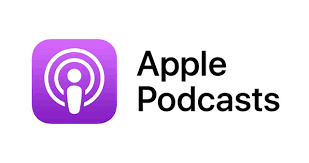Listen to the show using this podcast player:
With half of 2025 in the rearview mirror, it’s been a period in which investors have actively looked for opportunities beyond the United States. That’s good news not just for alternatives like Europe, but emerging markets like India and China as well.
Kingsley Williams (Chief Investment Officer of Satrix*) joined The Finance Ghost to talk about the key drivers and opportunities in each of China and India. The discussion also included insights from Ghost’s bottoms-up analysis of US-based companies and what those strategies teach us about what is happening elsewhere in the world.
There’s a lot more in the markets than just the S&P 500. This podcast will appeal to anyone looking to broaden their horizons and enhance their understanding of global investment opportunities.
This podcast was first published here.
For more information, visit https://satrix.co.za/products
*Satrix is a division of Sanlam Investment Management
Disclaimer:
Satrix Investments (Pty) Ltd & Satrix Managers (RF) (Pty) Ltd is an authorised financial services provider. The information does not constitute advice as contemplated in FAIS. Use or rely on this information at your own risk. Consult your Financial Adviser before making an investment decision. While every effort has been made to ensure the reasonableness and accuracy of the information contained in this document (“the information”), the FSP’s, its shareholders, subsidiaries, clients, agents, officers and employees do not make any representations or warranties regarding the accuracy or suitability of the information and shall not be held responsible and disclaims all liability for any loss, liability and damage whatsoever suffered as a result of or which may be attributable, directly or indirectly, to any use of or reliance upon the information. For more information, visit https://satrix.co.za/products

Full Transcript:
The Finance Ghost: Welcome to this episode of the Ghost Stories podcast. It’s another one with the team from Satrix and this time we’ve got Kingsley Williams. He’s the Chief Investment Officer of Satrix*. I must say, he’s dressed like a Chief Investment Officer today in a very nice jacket. It’s a great shame that we aren’t using the video here, Kingsley, because you’re certainly dressed for it. But it is an audio-only podcast, so I just wanted to create that wonderful image in people’s minds. On this fresh, cold winter’s morning, you are certainly dressed well. So, thank you for being on this podcast and coming to share your insights with the audience as you so often do.
Kingsley Williams: Well, it’s always a privilege speaking to you, Ghost, and thank you for having me on the show again.
The Finance Ghost: No, it’s a great pleasure. And what an interesting time in the world, right? The markets are just never boring. I think it’s what I certainly really enjoy about them. I would imagine that a lot of the listeners have much the same view on the markets. There’s just always something to learn, always something to think about, and then always a decision to be made based on what you learned. That’s what keeps this so fresh and interesting. And of course, much of the narrative this year has been around trade wars. That really has been all over the headlines. It’s still all over the headlines!
It’s got political elements, it’s got macroeconomic elements, it’s got company strategy elements around supply chain and procurement and how consumers will respond. It really has been, if nothing else, a very useful learning experience for anyone who is following the markets.
And trade wars generally do send jitters through the market because tariffs are, at the end of the day, an interference in efficient markets, right? A purely efficient market would say: where can something be produced in the most efficient way possible? And if it is cheaper to make it somewhere else, bring it to our country and sell it here than it is to procure the thing locally, then that is what will happen.
So a tariff is, at its very core, an attempt to just interfere in the efficiency of markets. It also often just becomes a tax on consumers, right? It gets dressed up as a fancy political narrative, but at the end of the day it’s basically a tax because the tariffs are going to the government. So if there just isn’t an ability to tweak supply chains, then that’s where the money ends up going.
It is very, very interesting and a lot of these concepts are somewhat macroeconomic in nature. And we’re not going to have an economics podcast today, but I think it’s important for investors to understand how this stuff works. So, I’m going to open the floor to you for just some of your views around these attempts to close trade deficits and implement tariffs and what some of those impacts could actually be in time to come.
Kingsley Williams: Yeah, thanks, Ghost. It is a very, very interesting time. There’s never a dull moment in markets and this year certainly has been filled with the full ambit of roller coaster wild rides that we’ve come to be familiar with, I guess, particularly with the Trump administration and their very strong policy stance on what they’re trying to achieve.
But yeah, I think particularly with the US and with China and the trade war, for want of a better word, in that space. I did a bit of a recap, and I must give credit to BlackRock for some of their insights around this matter, which markets were grappling with a few months ago, particularly when tariffs started escalating and particularly so between the US and China. But some of the points that they raised is that at the end of the day, you can’t cheat economics, right? You can’t fool economics. The fundamental principles will come to bear.
And I think you did a great summary of distilling what the impact of tariffs are. At the end of the day, it does present an additional tax and inefficiency on the markets. And so there are going to be impacts and consequences to implementing those tariffs relative to living in a tariff-free regime.
So I think some of the things that we saw happen earlier, and some of the risks that you might face, is that by trying to close trade deficits that could ultimately lead to a shutting off of foreign funding. And where we particularly saw this come to bear was on US bonds. I think up to that point there was risk in the equity markets because no one was clear on where this was all going to land and what the impact was going to be on the companies affected. But where it really brought the chickens home to roost, so to speak, was on US bonds. And it’s important to remember that those – a quarter of US bonds are actually owned by international investors or investors outside of the US and so if there is too aggressive a stance taken on tariffs, that could ultimately lead to an increase in interest rates. I’m not going to explain all the logic around that, I’m not an economist, but that might ultimately lead to increased borrowing costs for the US government. And I think that is something that they’re very sensitive to.
And so that ultimately created a bit of a check on where tariffs are likely to land – what’s going to be a palatable level for the US administration to implement to achieve what they’re trying to get to without disrupting the whole apple cart and increasing their borrowing costs, which is at the end of the day, what they need to keep the economy going and to keep the administration going.
So the 90 -day suspension of tariffs was obviously partly in response to those – that step-up in yields that we saw in the bond market. So that’s the window we’re in at the moment. And we’re going to need to see where that all settles. I’ll come back to that in terms of where I think those tariffs may land.
The other thing that we saw was that if you’re going to implement tariffs to such a degree, particularly with China, where such a large source of your supply comes from, that effectively translates to a trade embargo with that economy. If you’re going to implement 100% or in excess of 100% tariffs on a particular country, it effectively says that we’re not going to trade with that economy anymore because it’s completely going to shut off supply because it’s not going to be cost effective to procure those goods.
A couple of practicalities with that. Firstly, China constitutes up to 100% of the trade in certain sectors and goods, particularly computers and electronics. Now, the US can’t function without having a supply of those goods, so you’re going to lose access to those critical goods which are required to keep the economy going. So that’s another key aspect needs to be considered in this whole trade war, is that you want to achieve an outcome, but you can’t do that at the expense of actually compromising the overall economy – there’s the markets and there’s the actual Main Street economy that are affected by this. And obviously there’s going to be an equilibrium that gets found in terms of trying to achieve the policy objectives, but also balancing that with what the markets demand and also what the Main Street economy demands.
So expectations are – and I mean, no one really knows, right? We’ll have to see. It’s always a little bit of an unknown quantity that you’re dealing with, an unestimatable situation that you’re dealing with when it comes to these policy interventions. But expectations are – and this is based on particularly where the UK has landed with its trade deal with the US and various other countries are following suit – post that deal, is that tariffs are likely to land somewhere between 10 to 15%.Now, just to contextualise that, that is about five times higher than where the average US tariffs were with the rest of the world at the beginning of this year at the end of 2024.
My information says that tariffs on average were at about 2.3% across the board on a trade-weighted basis with the US, so that’s across all countries if you average them all out. If we’re going to land at somewhere between 10% and 15%, that’s at least five times higher than where we were at the beginning of the year, which is significant. And that speaks to the tax you were mentioning earlier.
Now, against that backdrop, we’re also speaking a little bit about China. We are expecting their GDP to – it has been slowing, but we are expecting it to grow at 5% for this year. And let’s not forget that China have a deep interest in protecting their own industries. So to the extent that their tech industry is at risk of trade embargo and receiving key technology that they rely on from the US, they are going to try and develop their own hi-tech so that they are less dependent on the US. So that could be a growth area for the Chinese economy as they continue to invest and develop their own capabilities.
China is also fearful of the potential impact that this trade war may have on their markets. You know, who knows what might happen there? In terms of some of their larger names, larger companies which are listed in the US market as depository receipts, that’s a key source of funding that they’re able to access. But again, there are ways that they may be able to mitigate that by potentially dual-listing those businesses in Hong Kong, which is also very open to global capital markets. So, there are ways to mitigate against these risks.
But yeah, maybe just to wrap up some of my thoughts, we are seeing that with the suspension and the pause in tariffs, China is currently estimated to be at an effective average tariff rate of 32%, but that is down from the peak of where it was expected to be 103%, which was effectively a trade embargo.
But obviously that is still significantly higher – that’s specifically on China – but it’s still significantly higher than the 2.3% that we had at the end of 2024 and that’s the highest that it’s been since 1941. So, I think that just contextualises how much of an increase these tariffs are if you look at it in terms of multiples that it’s increasing by relative to what it’s been at the past.
So yeah, it’s a very dynamic space. No one can really predict what’s going to happen. But hold on to – fasten your seatbelts, put on your crash helmets, it’s going to probably be a wild ride.
The Finance Ghost: Yeah, there are some great charts that tell the story, right? So if you go and have a look at the US bond yield, there’s been lots of volatility, which as you mentioned was really just the market being able to express a view on what’s going on from a US fiscal perspective. The bond yield is about as close as you’re going to get to: what is the US’s share price per se. You have to be very careful with how you interpret it, but it is the purest play view on what does the market think of what the US fiscus is doing as opposed to the US economy, the companies in it, etc.
Speaking of companies, another wonderful chart is a year-to-date of Microsoft versus Apple. Now what’s really interesting here is obviously Microsoft is a services business. Apple, yes, there’s a big services component, but there’s a huge hardware component and they are in the crosshairs of this whole supply chain issue and the share price divergence.
They were both under quite a lot of pressure until sort of mid-April and then the divergence was extraordinary. So year-to-date, Microsoft is up almost 18% and Apple is down almost 20%. I mean that is a remarkable difference in performance from one just being more hardware focused than the other. In fact, Microsoft is bad at hardware in my experience, generally speaking, so this is actually helping them in this environment.
And part of why that Microsoft share price has done well and part of why some of these tech businesses have rallied is because of a weaker dollar, which is another chart that I would encourage people to go and draw. Don’t just draw the US dollar to the ZAR, which is the one that we’re all familiar with obviously. And it’s been very helpful to the rand, what’s been happening, but even against the euro, for example, I mean the truth of it is it’s not that South Africa’s done particularly well this year, it’s that the dollar has weakened against a global basket of currencies because of inflation expectations, because of what’s going on in the US and businesses like Microsoft, Netflix, all of them are, at the end of the day, exporters of services.
So, in South Africa, we’re so used to thinking, oh, we have a weak currency and so our exporters at least do well, but we get hurt as importers. US, you’re not used to thinking that way because the dollar’s always strong. But actually, these tech businesses, their international businesses become better effectively when they’re translating to a weaker dollar as opposed to a stronger dollar. So it’s just quite interesting to see how much has really changed this year in terms of how the market is framing what’s going on out there.
And you’ve raised China, you’ve raised their growth on that side. What’s interesting for me, and I think what people are not talking enough about, is that the Chinese market is pretty much shrugging off to some extent what’s really going on here from an equity perspective. And I’m just not sure that’s right, because if I look at some of the company results, and Nike is pretty hot off the press, and they were talking about how they would significantly reduce their procurement from China. There’s just a lot of manufacturing capacity in China, and I’m not sure that people are really thinking about what that capacity is going to be used for going forwards if a lot of these US companies can pivot their procurement away to other countries. And it’s all still very up in the air right now, but it is relevant for Chinese consumption – does that mean that Chinese consumers will start buying more local and you’re going to have this bigger divide between east and West? I mean, no one knows, that’s the truth, but I also just don’t think people are really talking about that angle to this story. I don’t know if you’ve seen much along those lines and what thoughts you might have on that Chinese market Kingsley?
Kingsley Williams: Yeah, thanks, Ghost. I love your anecdotes on those company specifics and how that provides a lens into what’s happening at a broader level. What we do know is that China has underperformed for the prior three years, except for the last year in 2024, when it staged quite a significant recovery. But prior to that, it deeply underperformed. And I’ll come to some of the reasons why that might be the case.
But what you find in markets is generally when things underperform, obviously the potential for them to add outperformance subsequently obviously increases because they’re priced at a discount. It doesn’t always work out that way, but always a healthy rule to remember that if something’s run hard, chances are it’s likely to run less hard going forward over a subsequent period. And obviously the converse is true. If something has corrected substantially, it’s got much more potential to outperform – the value investing 101, look for things that are undervalued, look for quality things that are undervalued. That’s where you’re going to find long term sustainable returns.
But you know, I think what we can’t discount or ignore is the impact of a centrally controlled government which operates within China and the impact that can have on markets with their coordinated central policy responses and interventions. And so that’s a factor that one always has to bear in mind, that the Chinese economy operates a little bit differently to more open and free market economies that are less centrally controlled, if I can put it that way.
So there are many positives for China equities, hence the bounce that we’ve seen. And I guess just a word of caution there is, just be careful excluding such a large market. It is a significant economy globally and to not have exposure to it or to be underweight to it is a risk that you may not want to have in your portfolio. But there are still numerous questions. The one that you’ve highlighted is a very important one, which I’ll touch on at the end.
But some of the others are the fact that growth for quite some time in the Chinese economy has been slowing down. And so that is a headwind. And if you think about valuing a market, you’re always going to have a growth assumption. The higher that growth is, the higher premium you can attach to that market in terms of the multiple that you’re willing to pay, because that’s going to pay itself back with the future growth. So, it might seem expensive today, but that growth into the future, it starts making the investment cheap.
But one of the other headwinds that China faces is an aging population. We know that they’ve rewound that policy in terms of the one-child policy, but we haven’t really seen a pickup in the Chinese birth rate and that population growth and the demographic bell shape now of their population really changing. And so that is a material headwind. That would be one source of obvious growth, if you’ve got a growing population and a growing workforce, but now you’ve got that one hand tied behind your back, and so all you’re left with to grow is productivity improvements.
One of the other risks that China faces is obviously deflationary pressure. I’m not going to elaborate too much on that. One of the other ones that is well publicised is the overextended real estate market, the property market and how overextended that is, and the cap that that puts on people borrowing more and using the equity in their homes and their real estate to fund growth. So that is a real, big source of risk. And potentially if investors have negative equity in their property exposure, that puts a cap on future growth.
And then obviously, what we’ve been speaking about today is tariffs and trade wars and geopolitics and the risk that you point out in terms of what that means for the Chinese economy to continue growing. If it faces all of these headwinds from a geopolitics and trade perspective, how are they going to stimulate or utilise the capacity that they’ve invested in? Obviously, the US is one market, but there are many other markets around the world that they could supply. But, yeah, it’s going to be very interesting space to watch.
I guess this comes back to a broader point, which is there will always be risks in investing in equity markets. It comes with the territory, that goes without saying. But what is very difficult to predict is policy responses and the need to respond in the face of competition and threats and risks. And those are very difficult to know – how an entity, a market, a company, and even a centrally coordinated government is going to respond in the face of those threats and risks.
This brings us back to why markets demand a premium, comes back to that fundamental law of economics. You can’t fool economics. So, there’ll be supply and demand laws, there’ll be funding requirements, but there are competitive actors in a market, and they are going to respond to the risks and the threats that they’re facing to deal with those and to mitigate those in order to remain viable and competitive.
The Finance Ghost: So, I know you enjoy the company anecdotes – I’ll hit you with two others. The first one is FedEx, who are busy putting in a lot of effort right now to trying to unlock additional trade lanes as opposed to just China – US. That’s clearly a response, looking ahead and saying, well, there’s going to be a lot of Chinese manufacturing capacity. There’s going to be products that need to go elsewhere – how does FedEx actually manage that? That’s a pretty interesting play.
Another one that’s quite fun to watch is a business called TJX. That’s an off-price retailer in the US. Basically, what they do is they buy up unsold bulk essentially, from all kinds of different FMCG businesses. And they have this treasure hunt model where you never quite know what you’re going to find in the store. It can be luxury stuff as well, so it can be basically anything. On their last earnings transcript, there were obviously some questions from analysts around: are you starting to see more opportunities in Europe where product is being diverted away from the US, or is there an expectation of lower demand in the US, stuff that might land in Europe? At the time they said no, but some of that will be a lack of demand factors as well, right? Because we know that the European economy has been pretty slow. So, it’s just this interconnectedness of the global economy really does come through when you’re looking at concepts like this, which I think does make it very interesting.
You’ve also touched there on the Chinese market valuation and of course it’s absolutely right in terms of where some of that rallies come from. And this is something that people don’t always pick up when they look at markets. You can’t just look at a chart in isolation and say, oh, chart’s up, therefore everything is better this year. It’s not necessarily exactly true. It can also be coming off a very depressed base. It can also be about what’s going to happen next year that might not be in the numbers yet, for example. So, I always look at historical P/E averages versus where something is currently trading. I find that’s a better tool in the market than just having an esoteric debate to say, well, one company trades at a 10 P/E, the other one is at a 20 P/E. That doesn’t really tell you anything. Actually, it tells you a lot more if you look at where each company is trading versus historical averages, when a whole lot of people in the market were battling it out, bulls and bears to say, hey, here’s what we’re willing to trade at – that’s your best data point. If a multiple is meaningfully higher or lower than its average, that tells you something, in my opinion, a lot more useful than just comparing it to another random data point. Each to their own, of course, but that has worked out well for me.
In terms of the Chinese market, I think you’ve got some stats for us on those P/Es and I’m going to then lead you into another market in the interest of time, which I think has been a lot more expensive and has done a lot better. And now of course the question is, is it too expensive, is it potentially overcooked? And that is India. So, first question is just where do those Chinese multiples stack up right now versus averages? And then just comments on India, I think are always interesting.
Kingsley Williams: So very quickly, the Chinese economy is currently valued somewhere between 10 and 13 P/E, depending which index and how you calculate that P/E ratio. Historically it’s traded between – in a range around 11 and its forward P/E ratio, which means what the P/E ratio is expected to be once future earnings or expected earnings come through, is going to roughly be at 11. So, it’s all very closely clustered around that 11 P/E mark currently and on a forward basis. I think you can say that the Chinese market, certainly not expensive, it’s probably fairly valued and it is at that level, taking into account all of the risks that I highlighted earlier regarding the Chinese economy.
But yeah, if we do move across to India and maybe just some quick anecdotal stats, we are one day away from the end of the first half of the year of 2025, so to Friday the 27th the S&P500 was flat year-to-date in Rand terms. Nasdaq marginally up 1.3%, developed markets up 3.5%, emerging markets more broadly up 9.3%. So outpacing developed markets by 6%, outpacing the US by 9%. China up 13% year to date, and then India up 13.5% year to date. So been another strong showing for India this year.
And that’s really off the back of interest rate cuts. In June they cut – the Indian economy cut by another 50 basis points to 5.5%. It’s now at its lowest level since August 2022. Economic growth has also surpassed expectations to the end of March at 7.4%, outpacing expectations of 6.5% for 2025. And that’s largely driven by domestic demand, government spending on infrastructure as well as a surge in digital payments. So I think that’s a nice segue into some of the reasons why the Indian economy is growing so strongly.
The one is a big digitisation drive, increasing digitally connected customers, drawing first time investors into capital markets. There’s this unified payments interface which does over 10 billion – 10 billion! – transactions per month. I mean that’s just enormous. And they’ve also implemented biometric IDs and proof of address technology which has had a knock-on impact of making it easier for first time investors to access the markets in terms of their know-your-client onboarding process. So, they can very quickly and seamlessly get involved in the financial system with this new technology. So really, we’re seeing a big drive of investing being democratised in the Indian market.
The other force that’s at play within India is demographics. And almost contrary and opposite to China, we’ve got a growing workforce that’s expected to continue for the next two decades with an economy that is able to absorb that workforce because it’s growing so strongly. And this contrasts with many other markets around the world that are experiencing aging populations and declining workforces.
So, a growing middle class that’s digitally connected, it compounds those productivity gains. You don’t have that one hand tied behind your back. You’ve got the productivity gains as well as a growing population which is supported by those digital platforms, artificial intelligence and obviously with an underpin of growing population scale.
The Finance Ghost: Yeah, again you’ve touched on so many great points there. It has been a wonderful time for emerging markets. And a lot of that is just the shine being taken off this US Exceptionalism, the US dollar. And a very, very strong dollar ends up being quite oppressive for currencies, especially in frontier markets. I’ll give you another company anecdote which I know you like, Kingsley, which is the MTN share price up 53% year-to-date. It’s been absolutely incredible. This is not in any way, shape or form because everyone is suddenly using their cell phones more. This is because, based on what I’ve read as well in a lot of the recent banking updates, and specifically ABSA and Standard bank, is that the African currencies have had a much better time this year than they really expected.
Now, obviously for MTN, with lots of exposure into these frontier markets where the currency has been a huge issue for them in recent years, it’s this lack of strength in the dollar, right? We just have finally stemmed the bleeding in these African currencies. And that’s very, very good news for the companies that are operating in that space because they can finally get a breather. They can actually generate some capital, they can generate some profits, they can pay down some US dollar-denominated debt, get a little bit off that treadmill. It’s like if you go to the gym and you put the treadmill on maximum gradient and 10kms/h, you’re not going to last too long unless you are very, very fit. And that’s what it’s like to be operating in Africa, dealing with a currency that’s going backwards all the time, the dollar just gets a bit weaker. That gradient just goes down. You can just run either faster or for a bit longer. And that works really well for these companies. That works really well for some of the investors in these stocks.
So, I think let’s just get back to India then as a great example of an emerging market. It really has been the emerging market superstar. You often find though with countries that the stock market doesn’t always reflect what’s actually on the ground. I mean, South Africa is a perfect example. Right? One of the biggest companies that you can invest in here is the Prosus / Naspers group. And there is very little exposure to South Africa on the ground in that group. It’s a tiny, tiny blip. It’s mainly Chinese exposure and then big tech platforms in Europe, in Latam.
So, what is the situation for India? If you go and buy the Indian stock index, are you actually getting the Indian economy or what are you buying?
Kingsley Williams: Yeah, good question. You know, I ran through some of the larger names and I think I’ll skip the financial companies because those probably are more directly linked to the Indian economy but not necessarily as interesting, apart from obviously the digital payments boom that they would be enabling, which I spoke to earlier.
But yeah, I mean, I think some of the big companies that you find in India is Infosys, big technology, services and consulting company. In many ways – I was running through these list of companies that you see operating in India and in many ways, they mirror what you see in the US where the company’s domiciled in the US or it’s domiciled in India, but it’s actually a global business. And it’s no different, Infosys operates in 56 countries. It is actually also listed on the Nasdaq exchange in the US.
Another one is Mahindra. We would know it, Mahindra Limited, we would know that company with the vehicles that they sell in South Africa, but they also sell farm equipment, tractors, they’ve got services in tech, financial, logistics, etc. Operate in 126 countries, so truly a global business. And 26 of those countries, they have a presence in those countries beyond just sales. So, there is real presence and capability distributed around the world.
Company I’d never heard of before, Larsen and Toubro, if that’s the correct pronunciation. It’s an industrial business, operates in 50 countries and they operate in the engineering, procurement and construction space.
But yeah, India is renowned for its business process outsourcing. So, it’s very much a service-based business as per what you were speaking about earlier in terms of Microsoft. So, they service their global businesses and their customer base. You can think of these as being more high quality, more stable businesses. It’s difficult to stop outsourcing processes that you’ve outsourced to Indian businesses that run various critical processes on your business. It’s not discretionary spending – that’s part of how you run your business. So has a much higher moat. It’s less discretionary spending.
One final point on equity markets, particularly with India, is that it actually represents a tiny portion of the Indian economy relative to the size of the Indian economy, which is now, I think the fourth largest economy in the world behind the US, China and Germany. It’s just surpassed Japan. It’s really an enormous economy, but its equity market is still relatively small. But we are actually seeing against that backdrop the Indian market growing and more and more companies being available within the Indian equity market. And that’s against the backdrop of companies actually delisting globally. You’re seeing equity markets shrink in many, many countries around the world. Fewer and fewer companies being crowded out by the larger businesses. But in India you see more and more companies actually coming into the index. We’ve seen that happen here in South Africa with delistings, I’ve noticed it in other indices around the world. But India is an exception, its equity market is actually growing. So I think that’s an interesting dynamic.
And maybe if I can just wrap up on valuations to close the point, we are seeing the Indian market trade at much higher multiples, but like I said, I think that’s an underpinning with its technology, service and business process outsourced services that it offers and services many developed economies around the world. So very akin to what US businesses actually offer. It does trade at a P/E between 24 to 26 times, quite a lot higher than China. The average is 20 to 22 times. So, it is at a premium to what it has been historically. Forward P/E at 22 times. So that’s very much in line with where its 10-year and 5- year average has been. So, I think we can safely say it probably is trading more expensive. But then one always needs to remember that growth always appears expensive because investors are paying for those future earnings that they’re going to receive. And obviously the Indian economy is certainly delivering on that front.
The Finance Ghost: Yeah. I’ll tell you where I’d like to finish this discussion off is another point that makes India quite different to a lot of the other emerging markets, certainly to China. And that is that India is the world’s most populous democracy.
And there are two very important points there. The one is the sheer number of human beings. So, you referenced there how India has overtaken the Japanese economy. The demographic issue in Japan around birth rate is huge. And there are a lot of other countries that are going to get themselves into the same problem in our lifetime. It’s happening in front of us, it literally is.
And then the points around democracy and that just really means a government where investors feel like there are basic rights upheld; they don’t do crazy authoritarian things. There’s a fair amount of stability. And unfortunately this is where China has really hurt its valuation multiples in recent years, is we have seen some moves by Chinese Communist Party where they’ve clamped down from time to time on sectors like tech for example. And then it makes people nervous. It means that people are not going to pay the same multiple for Alibaba that they might pay for a US-based tech firm or a high-growth Indian business. It’s just the reality.
And there’s a lesson in there for South Africa as well, there’s a lesson in there for all emerging markets and frontier markets is that if you want to create wealth in the hands of your citizens, you need to create a business friendly environment and you need to allow for capital to flow and then enable people to actually participate in that, which of course is why I’m always so happy to do this stuff with Satrix. Because if there’s one business in this world that is very good at helping South Africans invest in the market and participate in this stuff, it’s you guys.
I think this has been another just really good chat on some of the trends out there at the moment. To the listeners, I would encourage you to go and actually familiarise yourself with the breadth of ETF offerings that are available at Satrix, because it certainly is so much more than just an S&P 500 or Nasdaq-100. And as you do your research, you’ll be able to then see, oh, is there a product where I can actually go and invest in the specific theme? I like India or I like China or I like Europe or I like emerging markets or I don’t like emerging markets or whatever view you arrive at – the point is that there’s a product for you.
So, Kingsley, I just wanted to thank you for coming in and sharing these insights. Lots of great points raised. To the listeners, I hope you’ve enjoyed this. If you’ve got specific stuff that you’d like us to cover in future, of course you’re always very welcome to submit those ideas. Let us know what you thought of the show.
And Kingsley, I look forward to getting you back, probably in a few months’ time if our usual cadence is anything to go by. Hopefully in some warmer weather and maybe another nice jacket, but just minus the jersey!
Kingsley Williams: Yeah, no, really appreciate the time Ghost and really couldn’t have summarised your views on what provides investor confidence and an underpinned to achieving growth – I really couldn’t have said that any better. I completely echo your sentiments there. And yeah, thank you for the time.
Browse the full range of ETFs available from Satrix here.
















